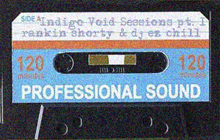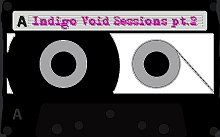
If you have a small studio, or if you’re still learning to trust your ears when listening to a mix, visual aides are really helpful. The frequency analyzer is a budget producer's best friend. The phase scope is also quite useful. But why stop there? Lissajous curves are big fun! Here's a roundup of basic spectrum analyzers and some specialties.
Most DAWs have analyzers on board. Use them! The frequency analyzer is the most important visual aid. Use it to analyze your favorite tracks and compare them with your own mixes. See and hear the differences, and try to understand them. And if you find that your mix lacks clarity, try analyzing each separate track of your mix.
Clean up the mess
Check for tracks with overlapping (conflicting) frequencies. When you find them, use EQ and compression (possibly multi-band or sidechain compression) to clean up the mess. A typical example of a 'conflict' would be a fat bass mudwrestling with an equally fat kick drum. MMultiAnalyzer is a spectrum analyzer/sonogram for multiple tracks, designed especially for tracking down conflicting frequencies
Another thing that's easy to spot with a frequency analyzer is sonic garbage, like useless low frequencies in a mid frequency sound (for example a piano). Or you can track down nasty peaks and ultra high frequency noise and remove it 'surgically ' using a parametric EQ.
Here are some more frequency analyzers
Voxengo Span
Blue Cat's FreqAnalyst
Seven Phases Spectrum Analyzer
ReFuse Software Real Time Analyzer
Vertex DSP Multi-Inspector
MDSP Freakoscope
Warning
Although it’s wise to use a spectrum analyzer, too much visual stimulation can also be a problem. You should not try too hard to hear everything you see. Both your ears and your eyes can deceive you. Superstition, placebo-effects and confirmation bias shape and influence our reality tunnels. This is true for everyone, not just for people living in rubber rooms. So don't believe everything you see.

Having said that, we'll move on to fancier spectrum analysis, spectrograms, sonograms and Lissajous curves.
SIGVIEW can do 'scientific' spectrum analysis
Sonic Visualiser can do fancy spectrograms
EAnalysis by Dr Pierre Couprie can do very fancy sonograms
ag-works Sonogram SG-1 is a free and flexible sonogram analyzer
Overtone Analyzer is a sonogram focussing on overtones
Flux Stereotool is a nice one-stop stereo package
Lissajous Suite is the ultimate lava-lamp for your DAW
Visualizing vibrating air
Once you start using visual tools for mixing sound, you may ask yourself what the vibrating air around your speakers might look like. You can't see the movements created by the diaphragm, but you can have a more or less adequate picture in your head of what's going on. Cameron Bobro has written a nice blogpost about the onion-model of music, that may help you visualize these subtle air-movements.
From straight science to harmonic hermetics
2500 years ago, all serious philosophy had a musical component. Mathematical models of music and harmony were used to explain the Ultimate Secrets of the Universe. This mode of thinking also produces nice visualizations of sound. For madd scientists only.
HarmoniComb: A New Method for Visually Describing Music
Ray Tomes' Harmonics Theory
Harmonic Interference Theory
















